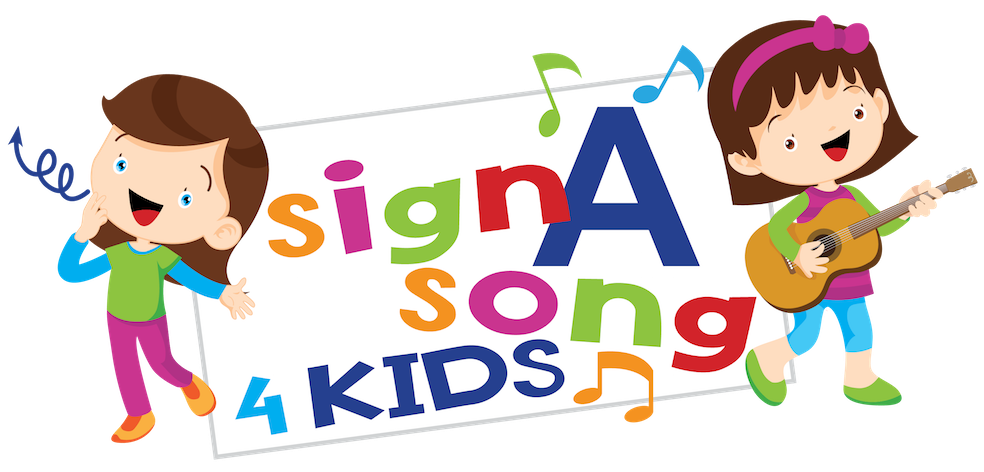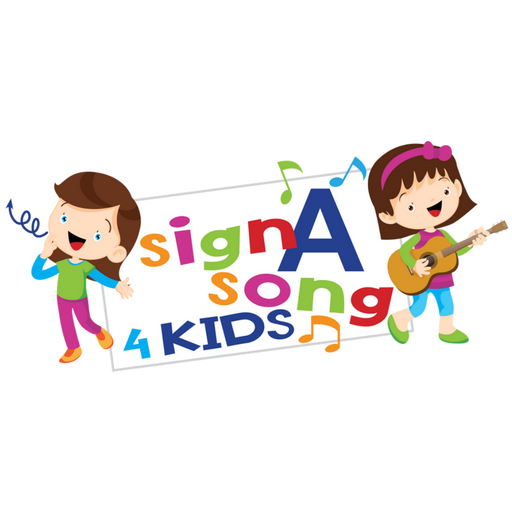Key-Word Signing
The first time a parent receives a diagnosis stating their child has a disability is a very emotional and overwhelming time for the entire family. There is so much information out there and new things to learn (therapy, funding programs and other support available) that it can become too much. When provided with some guidance and support parents slowly become more aware of the programs and tools available to help their child to function more successfully within society. These tools assist children with a disability to communicate and engage in social interactions with their peers and adults. It can be very emotional the first time a child learns to sign ‘I love you’ to their mum or dad, or even something everyday like ‘food’ or ‘toilet’. This is where ‘Sign-a-Song-4-Kids’ can help as it provides visual demonstrations of various Key Word Signs in an engaging manner to help children and their families learn to communicate using a common tool.
Key Word Signing is an aspect of Augmentative and Alternative Communication (AAC) where people learn to use other modes of communication to get their needs and wants met as well as to interact on a social level. When using Key Word Signing to communicate only the main or ‘key’ words are signed rather than every word.
The positive association, most children have with music and nursery rhymes, makes it a fun and engaging way to motivate a young child to engage in the imitation of key word signs. The symbolic nature of the signs can also serve to add meaning to the vocabulary within the nursery rhyme. Singing nursery rhymes with young children engages them in a meaningful interaction that also teaches the natural rhythms and inflexions of speech, providing the scaffold for meaningful vocalisations and/or word approximations.
Research tells us that a child’s mother’s voice is THE most important voice in the world, to them. The same research also tells us that, when you sing with your baby or young child, oxytocin is released in your brain, making you feel great while also increasing the bond between you and your child. Keeping this in mind, we would love it if you used our videos to teach yourself the Key Word signs, enabling you to engage in the music-making, reaping all the benefits and having lots of fun with your child.
Written by Laura Brain – B. Ed (Early Childhood) & Monica Zidar BA (Music), GDipMusThy, Registered Music Therapist
References:
http://education.qld.gov.au/asd-online-resource-kit/schools/learning-environment/augmentative.html
http://www.scopevic.org.au/key-word-sign-australia/
Learning to communicate is one of the most valuable and rewarding aspects in a young child’s life. As they grow and develop so too does their vocabulary, ability to express their needs and wants as well as their understanding of more complex conversations and interactions. For some children this process is natural and progressive where they quickly build upon their knowledge and skills. Other children, however, find the process difficult and struggle to grasp the concept or fail to see the importance of communication and social interactions with adults and peers. This is where augmentative and alternative communication (AAC), such as Key Word Signing (previously known as Makaton) is valuable. Communicating using a multimodal system, such as verbal language combined with signing, increases a child’s ability to communicate with those around them as they have the opportunity to access a variety of methods rather than simply using verbal communication alone. This, in turn, increases a child’s feelings of success and self-worth whilst reducing their stress levels and inappropriate behaviour as they are less frustrated.
The positive association, most children have with music and nursery rhymes, makes it a fun and engaging way to motivate a young child to engage in the imitation of key word signs. The symbolic nature of the signs can also serve to add meaning to the vocabulary within the nursery rhyme. Singing nursery rhymes with young children engages them in a meaningful interaction that also teaches the natural rhythms and inflexions of speech, providing the scaffold for meaningful vocalisations and/or word approximations.
In education settings access to AAC systems provides children with an increased opportunity to engage in the curriculum. Students with Down Syndrome or on the Autistic Spectrum, for example, often require a visual approach to learning. When Key Word Signing and/or picture symbols are ingrained within the classroom routine a wider range of children’s learning needs are being met.
It is important to note that AAC does not replace speech and is most beneficial when they are used collaboratively to support and enhance verbal communication and speech development. “Key word signing uses a core vocabulary of specially selected words that comprise concepts and ideas considered to be the most appropriate for children and adults with communication and language difficulties. Each word (concept) is matched to a hand sign. Key word signing uses Auslan signs.”
There are some important features of Key Word Signing to remember:
- The signs are intended to be used concurrently with speech;
- Sign the key words only whilst saying the whole sentence;
- Incorporate visual strategies (body language, facial expressions) and use symbols where necessary.
Written by Laura Brain – B.Ed (Early Childhood) & Monica Zidar – BA (Music), GDipMusThy, Registered Music Therapist
References:
- http://www.scopevic.org.au/key-word-sign-australia/
- http://education.qld.gov.au/asd-online-resource-kit/schools/learning-environment/augmentative.html
- http://www.downsyndromevictoria.org.au/DSAV/Information/Online_information_library/Key_Word_Signing/DSAV/Information/Key_Word_Signing.aspx?hkey=eec4b9a8-67fa-4016-a1c4-f8f5a110908b

